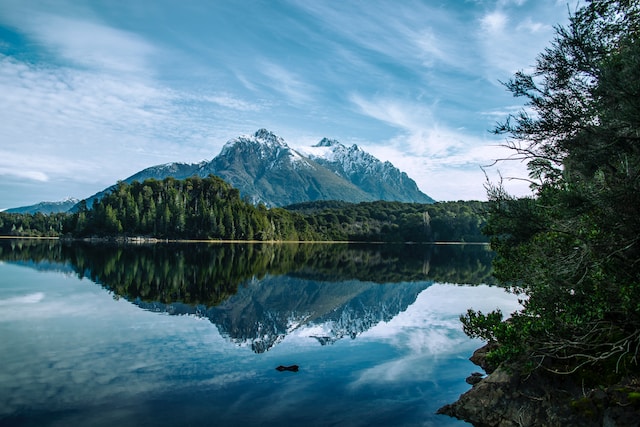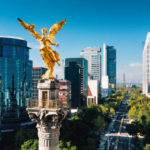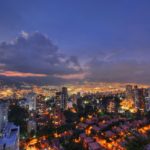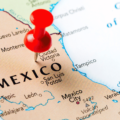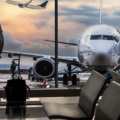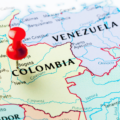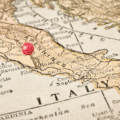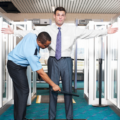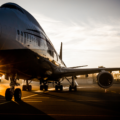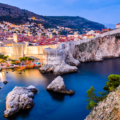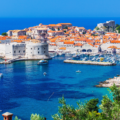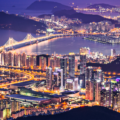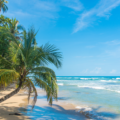My Return To Bariloche: Why This Is Still A Top Digital Nomad Spot in 2025
Have you ever found a place that just clicks with the digital nomad lifestyle so perfectly you can’t wait to go back? For me, that place is Bariloche. Nestled in Argentina’s stunning Lake District, it’s this incredible mix of jaw-dropping nature and a really warm, vibrant culture.
I first came here a few years ago, and now that I’m back in 2025, I’m reminded of why I fell in love with it. It’s a place where you can wrap up a client call and, thirty minutes later, be kayaking on a crystal-clear lake or hiking up a mountain. As “Jeff the chilled nomad,” my whole thing is finding spots that offer that perfect work-life balance, and believe me, Bariloche delivers. So, I’m going to walk you through everything you need to know, sharing my own experiences to help you make the most of your time here.
Key Takeaways
- Bariloche, Argentina offers a perfect blend of stunning natural beauty, an affordable cost of living, and a high quality of life, making it a top choice for digital nomads.
- You’ll find a wide range of accommodation, from modern apartments to social co-living spaces like Selina Bariloche, which are great for meeting people.
- Coworking spaces provide reliable Wi-Fi and networking opportunities, which I’ve found essential for staying productive and connected on the road.
- The city is a paradise for outdoor lovers, with easy access to hiking, skiing, and water sports on Lake Nahuel Huapi.
So, What’s The Big Deal About Bariloche?
For me, Bariloche is the ultimate playground for a digital nomad. It has that rare combination of jaw-dropping scenery, a surprisingly affordable lifestyle, a great quality of life, and a friendly, growing community of fellow remote workers.
Stunning Natural Surroundings
The number one reason I keep coming back to Bariloche is the nature. You’re literally working at the foothills of the Andes, surrounded by the massive Nahuel Huapi National Park. It’s an unreal backdrop for the daily grind.
No matter where you stay, you’re just minutes from an adventure. One of my favorite easy escapes is taking the cable car up Cerro Otto for panoramic views, but for a real “wow” moment, the short hike up Cerro Campanario is unbeatable. On a clear day, the 360-degree view is something you won’t forget. For a more serious day hike, the trek to Refugio Frey is an iconic Patagonian experience. And of course, you can’t miss the famous Llao Llao Hotel; even just seeing it is an experience.
Affordable Cost Of Living
One of the best things about Bariloche is how far your money goes. While it might be a touch more expensive than some other Argentine cities due to tourism, it’s still incredibly affordable compared to Europe or North America. I’ve found my monthly costs to be comfortably under $1,000, though this can vary.
Eating out is a highlight without breaking the bank. You can get a mind-blowing steak dinner at a top-tier *parrilla* like Alto el Fuego for a fraction of what you’d pay back home. Housing is also great value, whether you’re renting an apartment for a few months or staying in a co-living space.
Quality Of Life Factors
The quality of life here is just fantastic. The air is clean, the pace is relaxed, and the access to the outdoors is second to none. It’s a safe city with low crime rates, which gives you great peace of mind.
I also love the food culture. You can wander through local markets like the Feria de Artesanos picking up fresh produce, or explore the countless restaurants serving Patagonian cuisine. Plus, the healthcare here is reliable, with good hospitals and clinics available if you ever need them.
Growing Digital Nomad Community
Bariloche is definitely on the map for digital nomads. Each time I visit, the community gets bigger and more organized. It’s easy to connect with people here.
There are dedicated Facebook groups like “Bariloche Digital Nomads” that are perfect for asking questions and finding out about meetups. The local coworking spaces also host events, making it simple to network and make new friends who get the remote work lifestyle.
What’s the Weather Like?
Bariloche has a cool, temperate climate that feels a lot like the Alps. The weather can be a bit wild; I’ve definitely experienced all four seasons in a single day, so packing layers is my number one tip!
The city sits in a rain shadow, so the amount of rain changes dramatically from west to east. Over by the Andean peaks, they can get over 150 inches of precipitation a year, but closer to the city and the Limay River, it’s much drier. The average temperature for the year is around 8.4 °C (about 47 °F).
Summer, from December to March, is absolutely prime time. You get warm, sunny days perfect for hiking and kayaking, with temperatures sitting between 20°C and 28°C (68°F to 82°F). The driest month is January, which is ideal for outdoor adventures. Winter, from June to August, is all about skiing, with June and July being the wettest months, often with snow in the mountains and rain in the city. The shoulder seasons in spring and autumn are gorgeous, with fewer crowds and stunning fall colors.
Here’s a quick look at the average weather to help you plan.
| Month | Temperature (°C) | Precipitation (mm) |
|---|---|---|
| January | 15.6 | 10 |
| February | 16.2 | 9 |
| March | 14.4 | 11 |
| April | 12.2 | 13 |
| May | 10.0 | 15 |
| June | 7.8 | 170 |
| July | 5.6 | 170 |
| August | 6.4 | 140 |
| September | 9.0 | 110 |
| October | 10.8 | 90 |
Just remember these are averages, and Patagonian weather always keeps you on your toes!
Finding Your Home Base: Accommodation in Bariloche
You’ve got plenty of great choices for places to stay in Bariloche, whether you want your own space or a more social vibe.
Fully Equipped Apartments
If you’re planning on staying for a month or more, renting a fully equipped apartment is my go-to recommendation. You get your own kitchen, privacy, and often some incredible views of the lake or mountains. It’s perfect for settling in and establishing a routine.
I’ve had great luck with long-term stays on Airbnb, but it’s also worth checking local Facebook groups for rentals. For something with more services, an aparthotel like Villa Huinid Apart Hotel & Spa is a great option, especially if you want to be close to the Cerro Catedral ski resort.
Co-living Spaces
Co-living is a fantastic way to instantly connect with other nomads. These spots are designed for remote workers, so you get a private or shared room along with communal workspaces and a built-in community.
The most well-known option in town is Selina. It’s more than just a place to sleep; they have a dedicated coworking area, a great community vibe, and they organize all sorts of events and activities.
Hostels And Guesthouses
For those on a tighter budget or who love a social atmosphere, hostels are an excellent choice. They are a super easy way to meet other travelers, and many offer shared kitchens to help save money on food.
The Selina Bariloche is a top pick because it’s a hybrid model with dorms, private rooms, and a fantastic coworking space on-site. Other highly-rated spots include Hostel Inn Bariloche, which has amazing views of Lake Nahuel Huapi, and Hostel Achalay, which includes a free breakfast.
Where to Work: Coworking Spaces In Bariloche
Finding a good spot to work is key, and Bariloche has some solid options. Whether you need a dedicated desk or just a place to focus for a few hours, you can find it here.
Benefits Of Coworking
For me, a coworking space is a game-changer. It gets you out of your apartment and away from the temptation of a Netflix break. It’s also the best way to meet other professionals and beat the loneliness that can sometimes creep in with this lifestyle.
Having that separation between “home” and “work” helps me maintain a much healthier balance. Plus, the reliable, high-speed internet is often a lifesaver compared to what you might get in a rental.
Popular Co-working Spaces
While Bariloche’s coworking scene is still growing, there are several great spots to check out. My advice is to pop into a few to see which vibe fits you best.
- Selina Bariloche – This is probably the most popular hub for nomads. It’s part of the Selina hostel, so it has a very social and energetic atmosphere with reliable internet and comfortable workstations.
- Kau Cowork – Located right in the commercial district, Kau is a modern and stylish space. It’s a bit more professional and quiet, making it great for focused work. They offer printing services and private meeting rooms.
- La Llave – I like this place for its cozy, community-focused feel. It’s in the city center and offers hot desks and private offices. They also host workshops, which are great for networking.
- WorkBariloche – If you want a workspace with a view, this is it. It overlooks Lake Nahuel Huapi and has a more relaxed vibe. The high-speed internet and kitchen make it a comfortable place to spend the day.
- Bahia Coworking – This one is actually in Villa La Angostura, a beautiful town just outside Bariloche. It’s worth the trip if you want a change of scenery, with incredible views of Lake Nahuel Huapi.
Note: The original article mentioned Attix Coworking, but be aware that it’s located in Mendoza, not Bariloche!
Amenities Offered
Most coworking spaces here offer everything a digital nomad needs to be productive. You can count on these essentials.
- High-speed Wi-Fi connectivity
- Comfortable desks and ergonomic chairs
- Private meeting rooms for discussions or client calls
- Printing and scanning services
- Kitchen facilities with free coffee, microwaves, and fridges
- Lounge areas for relaxing and networking
- 24/7 access in some locations
- Access to recreational facilities like yoga studios or game rooms at places like Selina
- Community events, workshops, and social gatherings
These amenities make it easy to get your work done efficiently while still enjoying the laid-back Patagonian lifestyle.
Getting Around Bariloche
Navigating Bariloche is pretty straightforward. You have several good options for exploring the city and the stunning nature that surrounds it.
Public Transportation
The main way to get around via public transport is the bus system, run by a company called Mi Bus. The buses are affordable and cover most of the key routes you’ll need. To use them, you absolutely need a **SUBE card**, which is the universal transport card for many cities in Argentina. You can buy and top up a SUBE card at many “kioscos” (corner stores) or at the official office in the Centro Cívico.
The bus routes are integrated into Google Maps, which makes planning your trips super easy. Just tell the driver your destination when you get on, and they’ll charge the correct fare to your card.
Rent a car
Renting a car gives you the ultimate freedom to explore Patagonia at your own pace. I highly recommend it for at least a few days to drive the scenic Circuito Chico or the famous Route of the Seven Lakes. You can find rental agencies like Hertz and local companies at the airport and in the city center.
A word of caution: driving in Argentina can be an adventure with its narrow roads and sometimes unpredictable conditions. You’ll need an international driver’s license and should definitely get comprehensive insurance coverage for peace of mind.
Biking And Walking
Bariloche is a fantastic place to explore on two feet or two wheels. The area around the Llao Llao peninsula and the entire Circuito Chico loop are perfect for a day of cycling with incredible views at every turn.
There are plenty of bike rental shops in the city center. Hiking is, of course, a primary activity here, with trails for every skill level winding through Nahuel Huapi National Park. It’s the best way to immerse yourself in the region’s stunning beauty.
Visa And Legal Stuff for Digital Nomads In Argentina
Dealing with visas is a key part of the nomad lifestyle, and thankfully, Argentina has made things easier recently. Here’s what I’ve learned about staying here legally.
Tourist Visa
For many nationalities, including those from the US, UK, EU, and Australia, you don’t need to apply for a visa in advance. You can simply enter the country and get a tourist stamp in your passport that’s valid for 90 days. It’s a good idea to have proof of onward travel and accommodation, just in case they ask at the border.
As of my 2025 visit, it’s also a requirement to have travel health insurance that covers you for your stay. This is a must-have for any digital nomad, anyway!
The Argentina Digital Nomad Visa
This is exciting news for remote workers. In May 2022, Argentina launched its official Digital Nomad Visa. This visa grants you an initial stay of 180 days and can be renewed for another 180 days, giving you up to a full year in the country.
To apply, you’ll need to prove you work remotely for a foreign company, have sufficient income (while not officially stated, the consensus is around $2,500 USD/month), a clean criminal record, and health insurance. A huge perk is that your foreign income is not taxed in Argentina under this visa. You typically apply for this at an Argentine consulate before you arrive.
Health Insurance
Having solid health insurance is non-negotiable and a legal requirement for entry and for the Argentina Digital Nomad Visa. You need a policy that provides comprehensive medical coverage for your entire stay.
I’ve personally used a few different providers over the years. **SafetyWing** is a popular choice because it’s flexible and affordable, designed specifically for nomads. Another excellent option is **World Nomads**, which offers more comprehensive coverage, especially if you plan on doing a lot of adventure sports.
Connecting with People: Networking in Bariloche
Bariloche has a really friendly vibe, and with a growing number of remote workers, it’s easy to find your tribe. Here are a few ways I’ve connected with people.
Meetups And Conferences
The best place to start is online. The **Bariloche Digital Nomads Facebook Group** is your go-to resource for connecting with people, asking for tips, and finding out about informal meetups. It’s a great way to meet like-minded people as soon as you arrive.
While Bariloche isn’t a major conference hub yet, you’ll find plenty of larger tech and remote work conferences happening in Buenos Aires. It’s just a short flight away and can be a great opportunity to expand your network in the region.
Networking Events Organized By Coworking Spaces
Coworking spaces are the natural heart of the nomad community here. They are constantly organizing events that make it easy to meet other professionals.
- Workshops – I’ve attended some great skill-sharing workshops at local spaces, covering everything from SEO to graphic design.
- Social Hours – Many spaces host weekly “after-office” events or happy hours. These are perfect for casual chats and making friends.
- Meetups – You’ll find regular meetups focused on specific industries or interests, all organized through the coworking communities.
- Networking Events – These are more structured events, sometimes with guest speakers who share their entrepreneurial journeys.
These events are invaluable for building both professional connections and friendships, making your time in Bariloche much richer.
My Top Things To Do And See In Bariloche
When you’re ready to close the laptop, Bariloche turns into an adventurer’s paradise. I’ve had some of my most memorable travel experiences right here.
Hiking And Outdoor Activities
The hiking here is world-class. You’re in the middle of Nahuel Huapi National Park, with endless trails to explore. My absolute favorite is the day hike to **Refugio Frey**, which takes you through forests and up to a stunning mountain hut beside a lagoon.
Beyond hiking, you can go kayaking or stand-up paddleboarding on the lakes, try mountain biking on dedicated trails, or even go horseback riding with a local gaucho. In the winter, the focus shifts to skiing and snowboarding at **Cerro Catedral**, one of South America’s largest ski resorts. The ski season typically runs from June to October.
Cultural And Historical Sites
Bariloche has a fascinating history and a unique alpine-style architecture. The heart of the city is the **Centro Cívico**, a beautiful square with stone and wood buildings that looks like it was plucked from a Swiss village. Inside, you can visit the **Museo de la Patagonia Francisco P. Moreno** to learn about the region’s natural history and indigenous cultures.
You also have to see the iconic Llao Llao Hotel. Even if you don’t stay there, it’s worth visiting to see the stunning architecture and incredible location between two lakes.
Food And Drink Experiences
Prepare yourself for a feast! Bariloche is famous for two things: chocolate and steak. You absolutely must visit a chocolate shop like **Rapa Nui** or **Mamuschka** for a hot chocolate and to sample some of their incredible creations. Rapanui even has an ice skating rink inside!
For an authentic Argentine meal, head to a *parrilla* (steakhouse) like **Alto el Fuego** for some of the best steak you will ever have. Bariloche also has a booming craft beer scene. A visit to **Cervecería Patagonia** is a must; they have great beer and a deck with one of the most scenic views imaginable.
Skiing And Snowboarding
If you’re here in the winter (June to October), hitting the slopes is a must. Bariloche is a world-renowned ski destination, centered around **Cerro Catedral**, which offers terrain for all skill levels.
The resort is massive, and the views of Lake Nahuel Huapi from the top are breathtaking. You can easily rent equipment and book lessons in town or at the resort base. The **Winter in Bariloche guide** is a great resource for planning your ski days.
My Typical Cost of Living in Bariloche
To give you a real-world idea, here’s a breakdown of what I generally spend. Keep in mind that prices in Argentina can fluctuate, but it remains very affordable for remote workers earning in foreign currency.
- A loaf of bread: ~$1.50
- A liter of milk: ~$1.14
- A dozen eggs: ~$2.30
- A kilogram of chicken breast: ~$5.00
- A good bottle of Malbec wine: ~$5.00
Eating out is a great value. A coffee at a nice cafe like Delirante will cost you less than $2, and you can get a fantastic lunch or dinner at a mid-range restaurant for about $10-15 per person.
Here are some other typical costs I’ve encountered in 2025:
- Accommodation: A private room in a shared apartment or a simple studio can range from $400-$700 per month.
- Transportation: A local bus ride using the SUBE card is less than $1.
- Activities: A ski lift ticket at Cerro Catedral might cost around $50 for a day, while gear rental is also reasonably priced.
I find it easy to live a very comfortable and active lifestyle here on a budget of around $1000-$1,500 per month.
Bariloche Nightlife: Where to Unwind
After a productive day, Bariloche offers a lively nightlife scene, with everything from cozy pubs to big dance clubs. Things tend to start late here, with most clubs not getting busy until after 1 AM.
Here are some of my favorite spots to check out:
- Manush or Cervecería Patagonia: For a more relaxed evening, I love hitting up one of the many craft breweries. Manush has a great local vibe in town, and the Patagonia brewery at Circuito Chico has world-class views.
- Grisú: This is one of the biggest and most famous nightclubs in Bariloche. It’s built into the hillside with multiple floors and amazing views of the lake, making it a unique place to dance the night away.
- Tequila Pub Disco: Another popular spot right on the lake, Tequila has a great atmosphere and is perfect for enjoying the views while you dance.
- The Roxy Pub: If you’re into live music, especially classic Argentine rock, this is the place to be.
- IceBariloche: For something totally different, check out this bar made entirely of ice. You get a poncho and gloves to keep you warm while you sip on cocktails in a frozen wonderland.
Whether you want a chill beer or an all-night party, you’ll find it here.
Staying Safe and Sound
I’ve always felt very safe in Bariloche. It’s a calm and welcoming place, but like anywhere in the world, it pays to be smart and aware.
General Safety Tips
Here are a few common-sense rules I always follow when I’m here. They’re good practices for any digital nomad destination.
- Be aware of your surroundings, especially in crowded downtown areas or when out late at night.
- Keep your valuables secure. Don’t leave your phone or laptop unattended on a cafe table.
- I recommend using a money belt or a secure bag to keep your important items safe.
- Avoid carrying large amounts of cash. Use ATMs inside banks when you can.
- Keep your passport and important documents locked up in your accommodation. I always have digital copies saved as a backup.
- If you’re traveling solo, always let a friend know your plans, especially if you’re heading out for a hike.
Overall, the crime rate is low, and the biggest risks are usually petty theft, so just being mindful is your best defense.
Local Crime Rates
Bariloche is generally a very safe city, especially compared to other major hubs in Latin America. The most common issues are property crimes like vandalism or theft, often targeting unattended cars at trailheads. So, never leave valuables in your rental car.
By taking basic precautions like locking your doors and windows and being mindful of your belongings in public, you can easily avoid any trouble.
Medical Facilities And Emergency Services
It’s reassuring to know that Bariloche has a solid healthcare system. The main public hospital is the **Hospital Zonal Ramón Carrillo**, which has a good reputation. There are also several excellent private clinics, like Sanatorio del Sol and Sanatorium San Carlos.
For any emergency, you can dial **911**. The city is well-equipped with police and fire services. I always recommend having your travel insurance details and a copy of your passport easily accessible, just in case you ever need them.
Final Thoughts On My Time As A Digital Nomad In Bariloche
After returning to Bariloche in 2025, I can confidently say it’s still one of my favorite digital nomad destinations in the world. It’s a place that genuinely helps you find a healthy work-life balance. The combination of affordability, stunning nature, and a welcoming community is hard to beat.
Whether you’re looking for adventure in the mountains or a quiet place to focus on your work, Bariloche offers the best of both worlds. The reliable internet in coworking spaces and cafes makes it easy to stay productive, and the endless outdoor activities mean you’ll never be bored. If you want to work remotely from one of the most beautiful places on Earth, I can’t recommend Bariloche enough.
FAQs:
1. What are the best months to visit Bariloche, Argentina for digital nomads?
The best times are during the summer (December to March) for amazing weather for hiking and outdoor activities, or the shoulder seasons (spring and autumn) for fewer crowds and beautiful scenery.
2. Is it easy to find reliable internet access in Bariloche?
Yes! While home Wi-Fi can sometimes be inconsistent, the coworking spaces and many cafes in Bariloche offer reliable, high-speed internet perfect for remote work. Average speeds are generally around 10 Mbps, but faster connections are available in dedicated workspaces.
3. Can I find affordable housing options for an extended stay in Bariloche?
Absolutely. There are many rental apartments available on platforms like Airbnb that are perfect for longer stays. Joining local Facebook groups can also help you find great deals on monthly rentals.
4. What outdoor activities should I try while visiting Bariloche?
You have to go hiking in Nahuel Huapi National Park; trails like Cerro Campanario and Refugio Frey are must-dos. In the winter, skiing at Cerro Catedral is a highlight, and in the summer, kayaking on the lakes is incredible.
